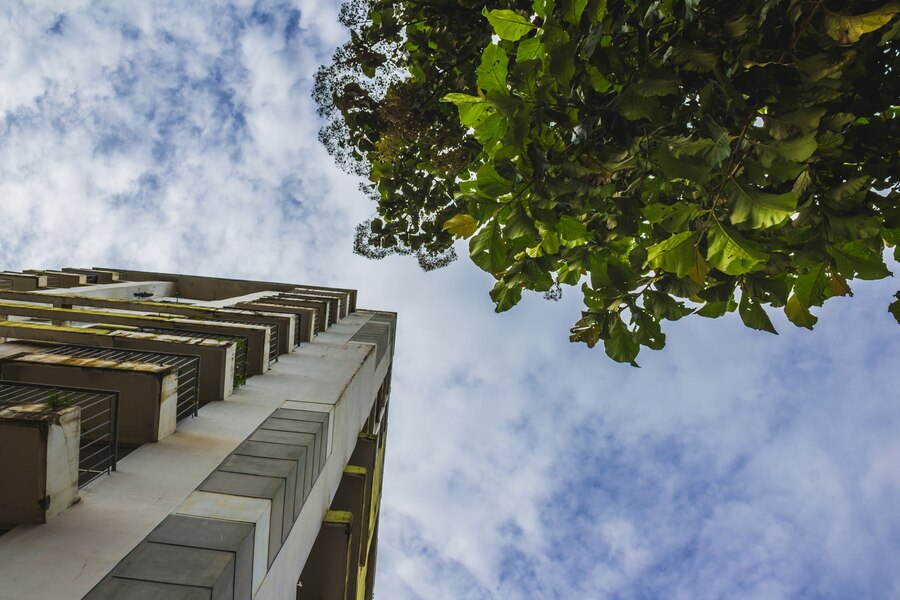
Urban greening: transforming cities with green spaces
Cities around the world are growing at an unprecedented pace, with buildings and infrastructure sprawling in every direction. But as urbanization accelerates, the need for green spaces becomes ever more essential. Urban greening, the practice of integrating parks, trees, green roofs, and natural areas into city landscapes, is transforming urban environments in ways that go far beyond aesthetics. From reducing pollution to improving mental health, green spaces are reshaping city life. This article explores how urban greening initiatives are turning concrete jungles into thriving, healthier communities.
The many benefits of green spaces in urban areas
Urban greening isn’t just about adding a few parks here and there; it’s a holistic approach to making cities healthier, more sustainable, and more livable. Green spaces help absorb carbon dioxide, reduce heat, and create habitats for wildlife. They also provide much-needed recreational areas for city dwellers, offering a respite from the stresses of urban life.
One of the most immediate benefits of green spaces is their impact on air quality. Trees and plants naturally filter pollutants from the air, helping to reduce the levels of harmful substances like nitrogen dioxide and particulate matter. This is especially critical in densely populated areas where vehicle emissions and industrial activities often lead to higher pollution levels. In some cities, greening efforts have been shown to decrease air pollution by up to 20%, making urban areas safer for residents and creating cleaner, healthier environments.
Urban green spaces also act as natural “cooling centers,” reducing the heat island effect common in cities. Concrete, asphalt, and steel absorb and retain heat, causing urban areas to be significantly warmer than their rural counterparts. Trees and plants, however, release moisture into the air, creating cooling effects that can lower temperatures by several degrees. This not only improves comfort levels but also reduces the need for air conditioning, leading to energy savings and lower greenhouse gas emissions.
Green spaces and mental well-being
Green spaces don’t just benefit the physical environment—they have profound effects on mental health and well-being. Studies have consistently shown that access to nature reduces stress, improves mood, and can even enhance cognitive function. In fast-paced urban settings, having accessible green spaces can help people decompress and escape from the constant noise and activity.
For many residents, parks and gardens offer spaces for relaxation, exercise, and social interaction. Urban greening initiatives can create areas where people of all ages and backgrounds can come together, fostering a sense of community and belonging. During the COVID-19 pandemic, parks became essential for many city residents seeking safe places to exercise, socialize, and recharge. This period highlighted just how important green spaces are for mental and social well-being, especially in high-stress environments.
Access to green spaces is particularly valuable for children, who benefit from outdoor play and contact with nature. Studies indicate that exposure to green areas can improve focus, reduce behavioral problems, and enhance learning outcomes for children. As cities grow, ensuring that young residents have access to nature will be critical for fostering healthier, happier communities.
Types of urban greening initiatives
Urban greening can take many forms, from large public parks to smaller, innovative green solutions that integrate seamlessly into urban spaces. Here are some of the most popular and impactful types of urban greening projects transforming cities worldwide:
- Parks and public gardens: Parks are the heart of any green city. They provide space for recreation, community events, and relaxation, making them essential components of urban planning. Large parks like Central Park in New York City or Hyde Park in London serve as green oases amid bustling city life, offering residents a place to connect with nature.
- Green roofs and walls: Green roofs and walls, also known as living walls, bring nature to urban architecture. By covering building surfaces with vegetation, green roofs and walls improve insulation, reduce energy costs, and help absorb rainwater. They also offer habitats for insects and birds, enhancing biodiversity in urban areas.
- Community gardens: Community gardens give residents the chance to grow their own fruits, vegetables, and flowers. These gardens not only provide fresh produce but also encourage environmental awareness and build community bonds. In many cities, local governments and nonprofits support community gardens as a way to promote healthy living and sustainable food practices.
- Street trees and urban forests: Planting trees along streets and creating small urban forests are effective ways to increase green cover and reduce pollution. Urban forests provide shade, help lower temperatures, and create a more pleasant walking environment. Many cities have ambitious tree-planting goals to increase their green canopy and promote sustainable development.
- Water-sensitive green infrastructure: Urban greening initiatives also play a role in managing stormwater. Rain gardens, permeable pavements, and bioswales are designed to absorb rainwater, reduce flooding, and improve water quality. This water-sensitive infrastructure helps cities become more resilient to extreme weather events and reduces the strain on drainage systems.
Challenges in urban greening
Despite its benefits, urban greening faces challenges, particularly in densely built areas where space is limited and real estate is expensive. Finding areas for new parks or gardens can be difficult in cities with high population densities, where every square foot of land is valuable. In these cases, creative solutions like green roofs, vertical gardens, and pocket parks (small green spaces squeezed into unused lots) offer ways to incorporate greenery without requiring large areas of land.
Maintenance is another concern. Green spaces need regular care to thrive, and cities must allocate funds and resources for upkeep. Without proper maintenance, parks and green areas can fall into disrepair, losing their appeal and benefits. Investing in sustainable landscaping practices, such as drought-resistant plants, can help reduce maintenance needs while ensuring that green spaces remain beautiful and accessible.
Equitable access to green spaces is a vital consideration. In many cities, low-income neighborhoods have fewer green spaces, contributing to disparities in health, quality of life, and environmental exposure. Urban greening projects should prioritize underserved communities, ensuring that everyone has access to clean, green spaces, regardless of their background or income.
The future of urban greening
Urban greening is a growing trend, with cities around the world embracing green spaces as part of their vision for sustainable, resilient development. As climate change intensifies, urban areas will increasingly need green spaces to mitigate extreme temperatures, reduce pollution, and promote healthier lifestyles.
Some cities are setting ambitious goals to expand green coverage. For example, Paris has pledged to plant 170,000 trees by 2026 and convert more schoolyards into green spaces. Singapore, known as the “City in a Garden,” integrates green rooftops, vertical gardens, and urban parks throughout its landscape. These initiatives demonstrate that urban greening is not just an add-on but a central element in designing cities for the future.
Smart technology and data also play a role in urban greening. Sensors and data analysis can track air quality, soil moisture, and temperature in green spaces, enabling cities to monitor and optimize their green initiatives. This data-driven approach ensures that resources are used efficiently and that green spaces are maintained for maximum benefit.
Cities are also looking to engage residents in urban greening efforts. Many offer volunteer programs and community initiatives that allow residents to participate in tree planting, gardening, and maintenance. Engaging communities creates a stronger connection to the environment, fosters environmental stewardship, and makes urban greening a shared responsibility.
Urban greening: a path to healthier, sustainable cities
Urban greening is transforming cities worldwide, addressing some of the most pressing challenges faced by urban areas. From reducing pollution and cooling temperatures to enhancing mental health and building community, green spaces have a profound impact on city life. As cities continue to grow, investing in green infrastructure will be essential for creating environments that support both people and the planet.
Urban greening initiatives offer a vision for a future where cities and nature coexist harmoniously, creating spaces that benefit individuals, communities, and the world as a whole. By embracing green spaces, cities can move toward a healthier, more sustainable future—one where the natural world and urban life thrive side by side.
